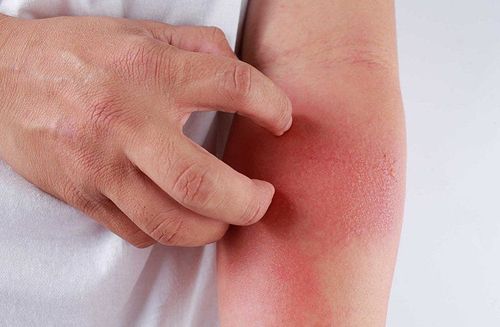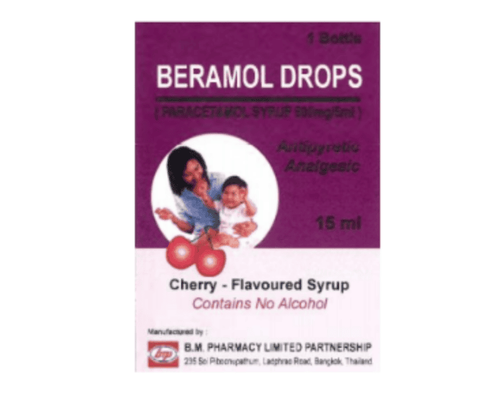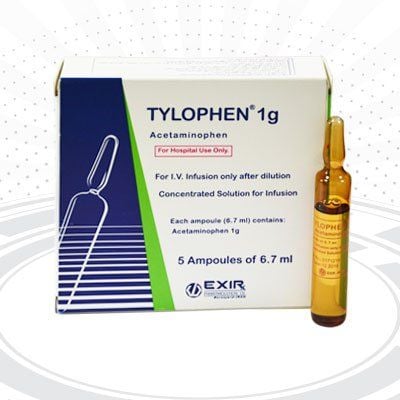This is an automatically translated article.
Scarlet fever or bush fever (English name is Scrub-typhus) is endemic in many parts of the world, but is common in countries in the Asia-Pacific region. The disease is caused by an agent called Orientia tsutsugamushi, has a natural outbreak, is transmitted randomly to humans when bitten by the larvae.
Scarlet fever is an acute infectious disease circulating in Vietnam. The disease has diverse manifestations, including fever, skin sores, rash, swollen lymph nodes, damage to many organs and viscera, which can lead to death if not treated appropriately and promptly.
1. Clinical manifestations of typhus fever
The incubation period of tick fever ranges from 6 days to 21 days (median 9 to 12 days). Patients often have a sudden high fever; Patients with high fever continuously, may be accompanied by chills, headache, body aches. Skin and mucosal manifestations: Congestive skin, possibly slight edema under the skin of the face and instep; conjunctival congestion of the eye. Skin sores: is a specific sign of typhus; ulcers are oval, 0.5-2 cm in size, with black scales or have scabbed to form ridged, non-exudative ulcers; The sores are usually painless, localized to soft skin areas such as armpits, chest, neck, groin, abdomen, etc. Skin rash: rash usually appears at the end of the first week of illness, has the form of maculopapular, fecal matter tonic mainly in the body, possibly in the limbs; purpura may occur. Swollen lymph nodes: patients often have swollen lymph nodes at the ulcer site and lymph nodes in the whole body; The lymph nodes are 1.5-2cm in size, soft, painless, and normally mobile. Enlarged liver, enlarged spleen: can be seen in about 40% of patients with typhus. In some cases there may be jaundice. Lung damage: patients often have symptoms of cough; auscultation may have rales; some patients showed pleural effusion; Severe cases of fever can have difficulty breathing, acute respiratory failure leading to death. Cardiovascular damage: patients with fever often have low blood pressure; Myocarditis was seen in some cases.

Tổn thương tim mạch ở trẻ
Meningitis , inflammation of the brain found in a small number of cases. The patient has a headache, there may be a disturbance of consciousness. Without appropriate antibiotic treatment, febrile illness can progress to fatal respiratory and cardiovascular complications. Mild and moderate cases may have a fever lasting 3 to 4 weeks, then the fever disappears, but the symptoms of fatigue may persist for a few weeks.
2. Fever symptoms on test results
Blood count : Normal or increased white blood cell count; the percentage of lymphocytes and monocytes is often increased; Platelets may be low. Chest X-ray : There may be a bronchiolitis-like lesion; Some patients have pneumonia lesions. Liver function : commonly seen elevation of liver enzymes; possible increase in bilirubin; Many patients have blood protein disorders (low albumin). Kidney function: Urine tests may show protein and red blood cells. Renal failure (hyperuremia and creatinine) has been reported in rare cases and is usually reversible with appropriate treatment. Ultrasound: Can detect hepatosplenomegaly, pleural effusion, peritoneum. In the case of meningitis, the cerebrospinal fluid may change the meningococcal pattern in clear water, with a slight increase in cells and protein.
3. Symptoms of typhus can be mistaken for other diseases
In the absence of ulcers, diagnosis is difficult because the manifestations of the disease are diverse, and are similar to many other acute febrile illnesses such as typhoid, leptospirosis, certain viral infections, and rickettsial infections other. Typhoid also presents with fever, hepatosplenomegaly, and damage to many organ systems and viscera. Unlike typhoid fever, typhoid usually has a subacute onset and is accompanied by gastrointestinal symptoms. Erythema in typhoid is usually small in number, distributed mainly in the abdomen and chest. Blood tests often show low white blood cells; cultures of blood, feces and some other specimens growing typhoid bacteria (S.typhi, S.paratyphi of all kinds). Leptospirosis is characterized by fever, muscle pain, possibly rash, jaundice, lung damage, kidney failure; Blood tests may also show thrombocytopenia, elevated liver enzymes. Signs suggestive of a diagnosis of leptospirosis are muscle pain and renal failure. If possible, serological tests can be done to diagnose leptospirosis (eg, Martin - Petit). Arbovirus infections: Usually have an acute course with symptoms of fever, headache, fatigue, possibly a rash..., similar to fever. Hemorrhagic signs associated with thrombocytopenia and elevated hematocrit are more common in dengue hemorrhagic fever. Arbovirus infections are not usually associated with hepatosplenomegaly, rarely have multiple organ and visceral manifestations at the same time, and the disease usually resolves spontaneously within 5-7 days.

Các bệnh nhiễm arbovirus gây vàng da, tổn thương phổi
Other rickettsial infections : The main manifestations of rickettsial infections are similar to those of typhus, including fever, headache, fatigue, rash, and damage to some organs and organs. Skin-specific sores not seen in tick-borne rickettsial fever (murine typhus), may be seen in rickettsial fevers but more rarely in typhus. These diseases often have a more benign course than typhus, have a specific antibody response to the respective antigen, and are also responsive to rickettsial drugs such as doxycycline, chloramphenicol. Sepsis diseases: There is fever, damage to many organs and viscera as in typhus. Sepsis is rarely accompanied by congestion and skin rash, effusion of membranes. It is necessary to carefully examine the skin and detect specific ulcers so as not to miss typhus; Do a blood culture test to identify the bacteria causing the sepsis. Malaria (primary malaria): The patient has fever and chills as in fever. It is necessary to ask for a history of entering an endemic area and take a blood smear for malaria parasites to confirm the diagnosis. When having symptoms of fever, suspecting a fever, the patient should immediately go to a medical facility for an accurate examination and diagnosis and prompt treatment. Avoid dangerous complications.
Please dial HOTLINE for more information or register for an appointment HERE. Download MyVinmec app to make appointments faster and to manage your bookings easily.













